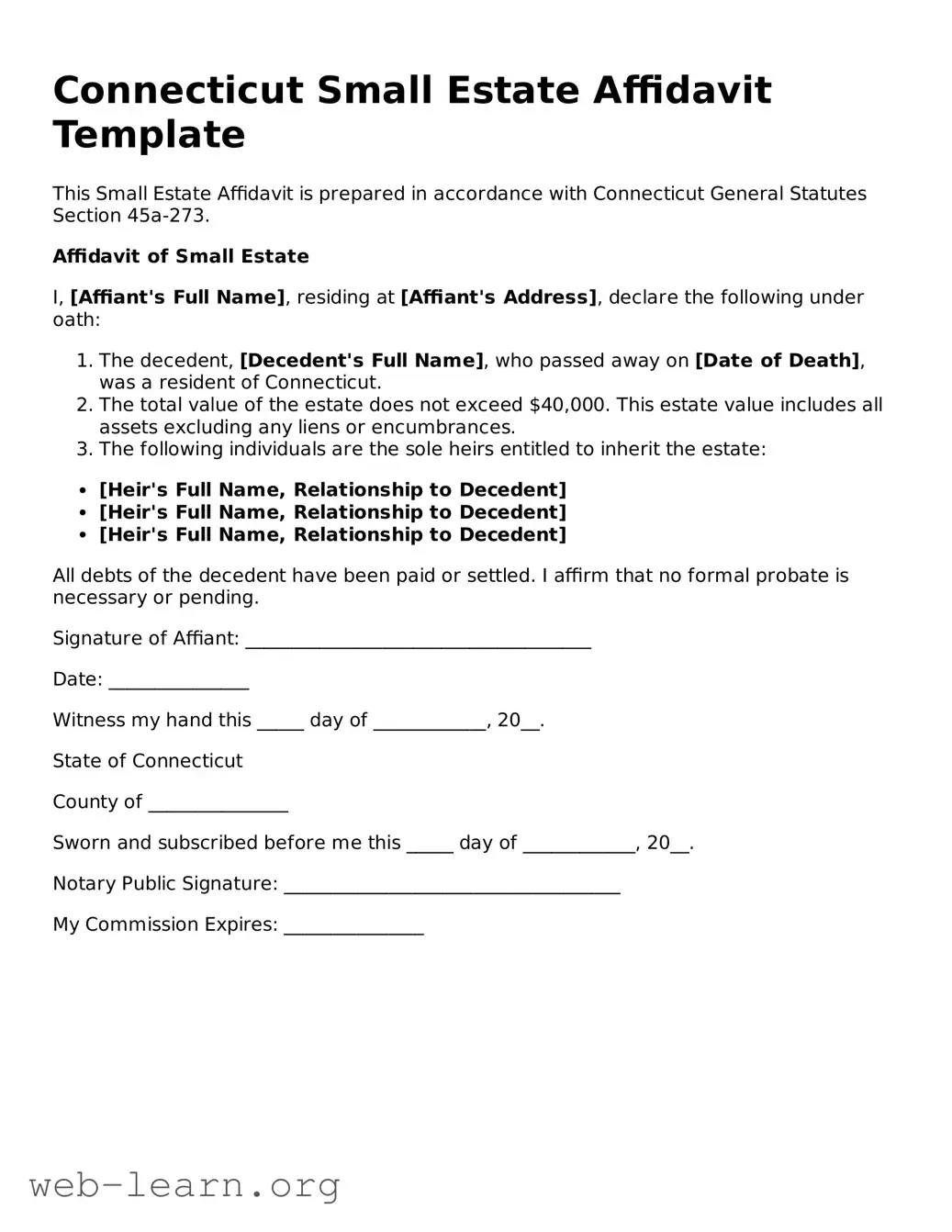Connecticut Small Estate Affidavit Template
This Small Estate Affidavit is prepared in accordance with Connecticut General Statutes Section 45a-273.
Affidavit of Small Estate
I, [Affiant's Full Name], residing at [Affiant's Address], declare the following under oath:
- The decedent, [Decedent's Full Name], who passed away on [Date of Death], was a resident of Connecticut.
- The total value of the estate does not exceed $40,000. This estate value includes all assets excluding any liens or encumbrances.
- The following individuals are the sole heirs entitled to inherit the estate:
- [Heir's Full Name, Relationship to Decedent]
- [Heir's Full Name, Relationship to Decedent]
- [Heir's Full Name, Relationship to Decedent]
All debts of the decedent have been paid or settled. I affirm that no formal probate is necessary or pending.
Signature of Affiant: _____________________________________
Date: _______________
Witness my hand this _____ day of ____________, 20__.
State of Connecticut
County of _______________
Sworn and subscribed before me this _____ day of ____________, 20__.
Notary Public Signature: ____________________________________
My Commission Expires: _______________
